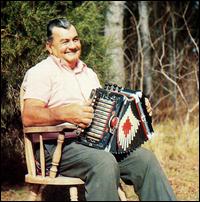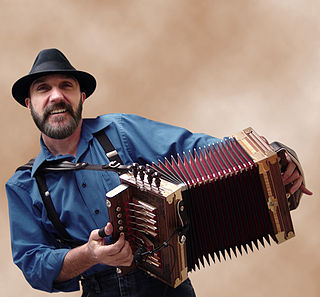The music of Louisiana can be divided into three general regions: rural south Louisiana, home to Creole Zydeco and Old French, New Orleans, and north Louisiana. The region in and around Greater New Orleans has a unique musical heritage tied to Dixieland jazz, blues, and Afro-Caribbean rhythms. The music of the northern portion of the state starting at Baton Rouge and reaching Shreveport has similarities to that of the rest of the US South.

Cajun music, an emblematic music of Louisiana played by the Cajuns, is rooted in the ballads of the French-speaking Acadians of Canada. Although they are two separate genres, Cajun music is often mentioned in tandem with the Creole-based zydeco music. Both are from southwest Louisiana and share French and African origins. These French Louisiana sounds have influenced American popular music for many decades, especially country music, and have influenced pop culture through mass media, such as television commercials.

BeauSoleil is a Cajun band from Louisiana, United States.

Clifton Chenier, was an American musician known as a pioneer of zydeco, a style of music that arose from Creole music, with R&B, blues, and Cajun influences. He sang and played the accordion. Chenier won a Grammy Award in 1983.
Swamp pop is a music genre indigenous to the Acadiana region of south Louisiana and an adjoining section of southeast Texas. Created in the 1950s by young Cajuns and Creoles, it combines New Orleans–style rhythm and blues, country and western, and traditional French Louisiana musical influences. Although a fairly obscure genre, swamp pop maintains a large audience in its south Louisiana and southeast Texas homeland, and it has acquired a small but passionate cult following in the United Kingdom, and Northern Europe

Amédé Ardoin was an American musician, known for his high singing voice and virtuosity on German-made one-row diatonic button accordions.

The Sundown Playboys are an American Cajun music band in Louisiana, United States.

Austin Pitre was born in Ville Platte, Louisiana. A Cajun music pioneer, Pitre claimed to be the first musician to play the accordion standing up, rather than sitting down. Along with his band, the Evangeline Playboys, Pitre recorded Cajun dancehall hits such as the "Opelousas Waltz."

Nathan Abshire was an American Cajun accordion player. His time in the U.S. Army inspired Abshire to write the crooner song "Service Blues", which the newspaper Daily World reported as "one of his most memorable tearjerkers". After the war, he settled in Basile, Louisiana, where he played regularly at the Avalon Club. He released his best-known record, "Pine Grove Blues", in 1949. Abshire's music became more well known outside of Louisiana at the 1964 Newport Folk Festival. Abshire was never able to write so he was unable to sign autographs, resulting in him having to politely decline the requests. Despite thoughts of Abshire being "arrogant or stuck-up" for not signing autographs, he was unable to read and write. However, Abshire was taught how to write his own signature by Barry Jean Ancelet. Despite receiving more income from music than the majority of Cajun musicians, Abshire was not able to entirely depend on that income to live on. Abshire had multiple jobs during his life and his final job was working as the custodian of the town's dump. Abshire's legacy continued after his death in the form of a museum, a book, and a magazine special issue.

Dennis (Denus) McGee was one of the earliest recorded Cajun musicians.

Cajun music has its roots based in the ballads of the French-speaking Acadians of Canada, and in country music.

Ida Lewis "Queen Ida" Guillory is a Louisiana Creole accordionist. She was the first female accordion player to lead a zydeco band. Queen Ida's music is an eclectic mix of R&B, Caribbean, and Cajun, though the presence of her accordion always keeps it traditional.

Lee Benoit is an American Cajun musician from Rayne, Louisiana.

Warren Storm was an American drummer and vocalist, known as a pioneer of the musical genre swamp pop; a combination of rhythm and blues, country and western, and Cajun music and black Creole music.
Leo Soileau was one of the most prolific Cajun recording artists of the 1930s and 1940s, recording over 100 songs, which was a substantial amount considering the reluctance to record the music during its early stages. He is known as the second person to record a Cajun record and the first to record this genre with a fiddle.

Cléoma Falcon was an American guitarist and vocalist who, along with her husband Joe Falcon, recorded one of the first known examples of Cajun music. The recording, "Allons à Lafayette" was released in 1928, and opened the way for other commercial releases of Cajun music. Aside from being a ground-breaking recording artist, Cléoma Breaux also was one of the few women to perform live, despite the social standards of the era. She was the first woman inducted into the Cajun Music Hall of Fame.

Mabel Sonnier Savoie was an American singer and guitar player with roots in Southern Louisiana's country and western and Cajun music scene. She was one of the first solo female recording artists in Louisiana.

John Irvin Delafose was an American French-speaking Creole Zydeco accordionist from Louisiana.

Mojo & The Bayou Gypsies is a band led by Mojo from Breaux Bridge Louisiana. Their music is a blend of zydeco, Cajun and their particular style which he calls Red Hot Mojo Music. Circa 2018, they consist of Mojo on vocals and Cajun accordion, Zydeco T Carrier on Frottoir, Greg Hirte on Cajun fiddle, Tee John Moser on drums, and Beau Brian Burke on bass.
















